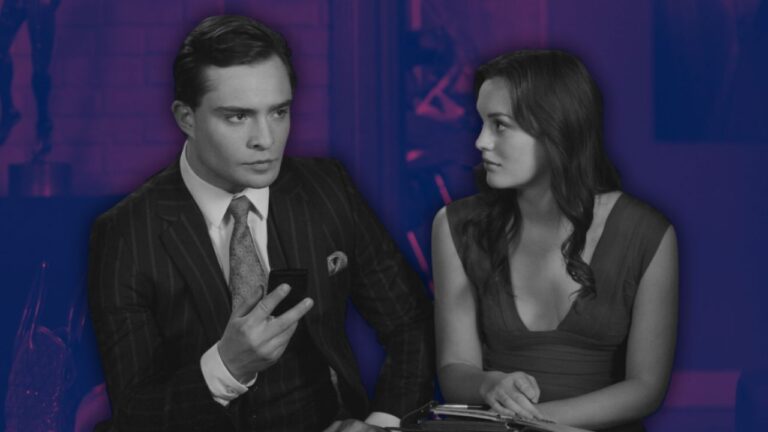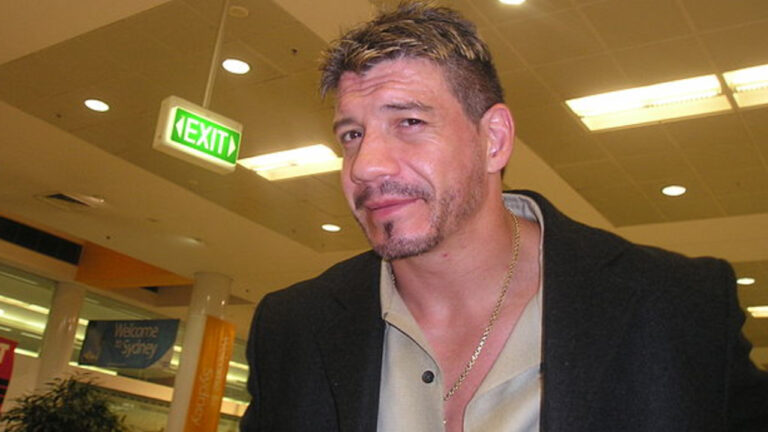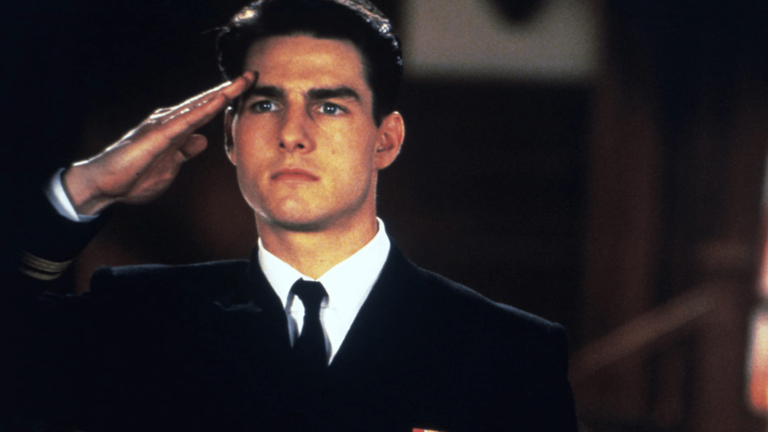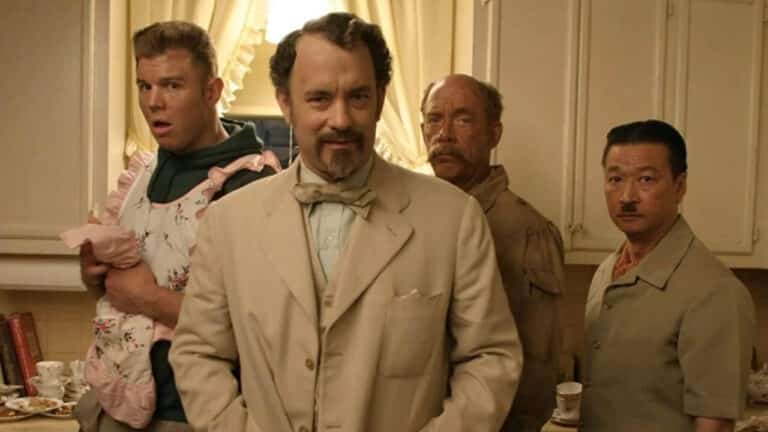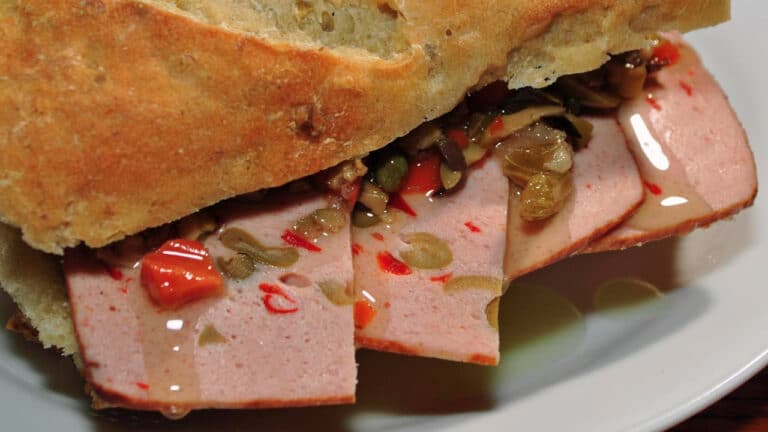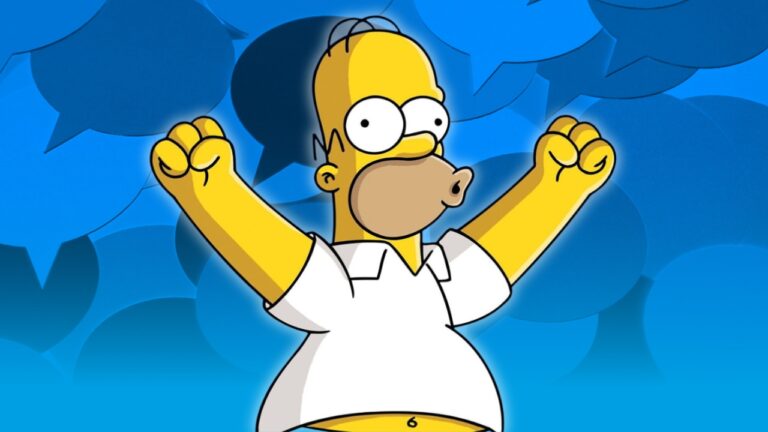20 Best John Woo Movies

Perhaps no other action film director’s impact has reverberated across the genre quite like the work of director John Woo.
Bursting onto the film scene with his breakthroughs in the late 1980s, John Woo movies left an indelible mark in Hong Kong and Hollywood. His mastery over meticulously choreographed gun battles, highly-stylized violence, and effortless ‘cool’ can be found across action cinema and video games, most notably Remedy Interactive’s Max Payne franchise and the Wachowskis’ The Matrix.
On the heels of his latest release, Silent Night, Geek Nexus honors a proven master of the craft and showcases twenty John Woo movies, from his most audacious and celebrated to the lesser-known gems.
1. Reign of Assassins

Reign of Assassins has quite a bit going for it: a wuxia epic starring Michelle Yeoh as a former assassin trying to escape her former life with her husband by her side. The only reason that the film ranks as low as it does lies in the simple matter of John Woo not being the principal director; Taiwanese writer/director Su Chao-Pin oversaw most of the production with directing assistance provided by Woo.
The action scenes and humor prove to be film highlights regardless. The pair would collaborate again four years later for a vastly different historical epic, The Crossing, but Reign of Assassins became a foundation for a promising partnership.
2. Hand of Death

An earlier journeyman among John Woo movies in the Hong Kong studio system, this 1976 film follows the tradition of the many martial arts films of that era by focusing on a Shaolin warrior setting out to stop a warlord from destroying his fellow monks. Despite what could be seen as box-standard ‘70s kung-fu, Hand of Death marks the only time John Woo worked with the world-renowned Jackie Chan and Sammo Hung, years before the two men made waves in the 1980s. Both Chan and Hung serve in mere supporting roles, but their participation alone makes Hand of Death a curiosity for martial arts diehards to seek.
3. Paycheck

Paramount Pictures.
The last John Woo movie made in Hollywood for twenty years, Paycheck attempted to emulate the same sci-fi mind-bending action found in Total Recall.
Based on Philip K. D’s short story of the same name and borrowing similar plot points from Total Recall before it, Paycheck follows a reverse engineer who frequently has his memories erased to protect his clients.
However, the engineer, played by Ben Affleck, finds himself running afoul of his previous employers to protect whatever project he’d worked on the last three years, relying only on seemingly random items sent to himself to figure out what he did. Distinct almost entirely for its surprisingly well-rounded cast, the film sadly didn’t live up to Woo’s intended standards. Paycheck remains an entry the director himself expresses disappointment over.
4. Broken Arrow

Of the many American films John Woo directed in his Hollywood era, the most overlooked remains the peculiar Broken Arrow, and for good reason. Referring to the military call sign for missing nuclear assets, Broken Arrow followed a rogue US Air Force pilot stealing two nuclear warheads to blackmail the government, only to face off against his tenacious former co-pilot.
Christian Slater portrays the film’s hero, but John Travolta’s villain steals the show with a deliberately over-the-top performance that overshadows the rest of the proceedings. The worst thing said about Broken Arrow, despite Woo’s action touches and Travolta’s work, is it has a rather dull story despite the high stakes at play.
5. The Crossing

John Woo’s filmography doesn’t consist of what most would consider purely ‘dramatic’ entries, but the two-part historical The Crossing serves as one of Woo’s rare against-type directing vehicles.
Based on the real-life tragedy of the Taiping sinking of 1949, The Crossing takes a Titanic-style approach to its story. Part I functions as a romantic war drama set amidst World War II and the Chinese Communist Revolution, while Part II focuses on the Taiping incident itself, crisscrossing between various star-crossed couples trying to survive in the chaos. The film admirably displays sides of Woo that the director didn’t emphasize in prior films, but the pure historical drama doesn’t play to the director’s sensibilities as strongly.
6. Windtalkers

Something of a by-the-numbers World War II war drama, what sets Windtalkers apart from most in its genre lies in the focus on the real-life Navajo code talkers using their native language to direct military action during the Pacific front of the war.
Nicholas Cage returned from Face/Off to portray a Marine corporal tasked with protecting his new Navajo partner, played by Adam Beach, during the invasion of Saipan. Despite the film’s unique hook and focus, the code talker aspect merely adds set dressing to an otherwise conventional war film. Woo has stated in interviews that he hopes audiences give Windtalkers another look, and what lies here is undoubtedly made with utmost care.
7. Just Heroes

Made in the same vein as the earlier A Better Tomorrow films, Just Heroes serves as another co-direction work for John Woo, this time with director/actor Wu Ma. Unlike the latter Reign of Assassins, Woo oversaw most of a production designed to financially stabilize his directing mentor, the legendary Chang Cheh of The One-Armed Swordsman fame.
As such, the film serves as the most explicit of the prior wuxia influences inherent in ‘heroic bloodshed’ films, particularly in a story testing the bonds between three adopted brothers after their Triad father is murdered. Lost in the shuffle among the bigger Hong Kong hits, Just Heroes does stand out for an early supporting role for Stephen Chow as an Iago-esque upstart gangster.
8. Last Hurrah for Chivalry

Like many Hong Kong action directors of his era, John Woo got his start working on period martial arts films in the late 1960s and throughout the 1970s. Still, all that experience culminated in this 1979 diamond in the rough.
Last Hurrah for Chivalry provides the prototypical blueprint of what Woo would explore seven years later in A Better Tomorrow: where do honor and loyalty lie in a world that treats such virtues as commodities? Made in the same style as his mentor Chang Cheh, Woo’s interpretation of brotherhood persevering over impossible odds shines as two hired swordsmen set out to avenge the murder of a merchant’s father. Coupled with violent swordplay and kinetic martial arts choreography, Last Hurrah for Chivalry stands as the best of Woo’s martial arts cycle and sets the stage for a promising future.
9. Silent Night

In his latest film entry, John Woo took an unorthodox direction in returning to Hollywood: making an action film that took his unique cinematic eye without a hint of dialogue. Silent Night lacks the bombastic style of earlier Woo entries, particularly among his Hong Kong films. Still, it allows for more dramatic heft in what would otherwise be seen as a typical vigilante revenge thriller.
Despite the Christmas marketing, Silent Night marks the darkest in Woo’s filmography since Bullet to the Head and has, understandably, received a polarized response for scripting and creative decisions. However, Joel Kinnaman’s mute performance of a bereaved, vengeance-fueled father testifies to Woo’s talent for finding the right leading man and worth the price of admission.
10. Manhunt

John Woo returned to contemporary-set action thrillers with this loving homage to Japanese actor Ken Takakura and his earlier filmography with this 2017 release. Based on the Japanese novel of the same name, Manhunt followed the Fugitive-esque plight of a Chinese pharmaceutical lawyer based in Osaka, Japan, framed for murder. Between the dogged detective tasked to apprehend him and the hired hitmen sent to silence him, the lawyer has to rely on his guile and skill to make it out alive.
A slightly sci-fi-tinged finale doesn’t derail an otherwise conventional action-thriller narrative, and, as a film meant to reconnect Woo with his older style of action filmmaking, it more than works as advertised. The central farmhouse shootout stands out as an ode to a similar sequence in The Killer nearly thirty years before.
11. Red Cliff

Five years after the failure of Paycheck, Woo returned to his wuxia roots with the fittingly epic two-parter Red Cliff. In a reteaming with Hard Boiled leading man Tony Leung, the film fictionalizes the Battle of Red Cliffs that set the stage for China’s Three Kingdoms period.
Many influential figures of the Three Kingdoms period make appearances, with Leung portraying the legendary General Zhou Yu, Sun Quan’s frontline commander tasked with leading the alliance that would eventually thwart the warlord Cao Cao’s unification ambitions. The grand scale of Red Cliff remains unmatched by anything Woo has overseen before or since, finally fulfilling an ambition he held for fifteen years. Audiences should seek out the full-length two-part release that runs over four hours to truly appreciate the grand tapestry at work.
12. Once a Thief

One wouldn’t know it by reputation, but John Woo movies offer a healthy dose of humor between the gunfire and mayhem that punctuate his better-known works. Such is the case with Once a Thief, a heist film focusing less on action sequences and more on the relationships between the thieves at the center of its story.
Set primarily along the French Riviera, Chow Yun-Fat, Leslie Cheung, and Cherie Chung play three art thieves who, after being double-crossed by their benefactor, seek revenge by stealing back the painting they stole for him. The film has more in common with Ocean’s Eleven than the rest of Woo’s filmography, but his signature gunplay remains as tight as ever. Woo emphasizes the kinetic mood of the action scenes, and the literal explosive set-pieces showcase a director going light-hearted in comparison to his more blood-soaked entries.
Once a Thief remains an under-appreciated gem in Woo’s career and deserves more love.
13. Bullet in the Head

After the production issues that plagued A Better Tomorrow II, John Woo took the script intended to be a prequel to the series and retooled it into what would become Bullet in the Head.
Like the initial pitch for what would become A Better Tomorrow III: Love & Death in Saigon, Bullet in the Head takes place during the Vietnam War as three childhood friends from Hong Kong relocate to Saigon to work as smugglers. What follows is one of the director’s bleaker yet emotionally resonant entries as the initial camaraderie gives way to degrading greed and betrayal amidst a harsh war setting. At once an action film and war drama, Bullet in the Head sees Woo operate on a grander political scale and pushes the bonds between three men to their absolute breaking point.
14. Mission Impossible 2

What if Alfred Hitchcock made Notorious as a high-octane action film?
For the second installment of the Mission: Impossible film series, Tom Cruise enlisted John Woo after the success of Brian De Palma’s outing to craft an installment vastly different from what came before. In Ethan Hunt’s latest mission, he must enlist the ex-girlfriend of a rogue IMF agent to help stop a deadly virus from being unleashed in Australia.
Out was the more paranoid, Hitchcockian sensibilities of De Palma, and in was Woo’s signature action credentials and effortlessly cool. The standout sequence remains the final fight between Cruise and Dougray Scott’s villain, particularly an eye-opening use of a knife. As the Mission: Impossible franchise continues to raise the bar with audacious stunt set pieces, Mission: Impossible 2 requires a second look for style alone.
15. Hard Target

John Woo’s first American film, made fresh off of the success of Hard Boiled, remains an entertaining deep cut and a favorite among devotees to John Woo movies. In a riff on the classic short story “The Most Dangerous Game,” Jean-Claude Van Damme stars as an out-of-work Cajun marine in New Orleans who stumbles upon a sinister underground racket offering the recreational hunting of homeless marines.
The film went through numerous creative hurdles, the least being Woo’s inability to exercise the same creative control he enjoyed working in Hong Kong. Regardless of the behind-the-scenes issues, Hard Target stands as one of JCVD’s fan-favorite films, especially for Woo’s impeccable action sequences. The film has seen a recent 4K Blu-ray release, including both the US theatrical cut and John Woo’s director’s cut; audiences should seek the director’s cut out.
16. A Better Tomorrow II

The smashing success of A Better Tomorrow led to a follow-up, A Better Tomorrow II, being released just over a year later. The majority of the cast of the previous installment returns, including breakout Chow Yun-Fat, as Sung Tse-Ho sets out to avenge the murder of his mentor’s daughter.
Far more extravagant and over-the-top than its dramatic predecessor, A Better Tomorrow II sees Woo dial up the intensity he previously explored with a near-comedic body count said to be in the hundreds. Creative disputes between Woo and producer Tsui Hark over the focus aside, the final mansion shootout remains the true standout of the film, as does Yun-Fat’s hotel hallway sequence.
17. Face/Off

Inarguably the best of his Hollywood era, Face/Off serves as the film in which Woo finally achieved true creative freedom in an American film production by reenlisting John Travolta and pairing him with Nicholas Cage.
In an admittedly ludicrous set-up, Travolta’s FBI agent Sean Archer has his face swapped with vicious terrorist-for-hire Castor Troy, portrayed by Cage, to locate a bomb placed somewhere in Los Angeles. However, the stakes heighten when Troy takes on Archer’s face for himself, effectively swapping places with him and causing havoc in Archer’s life.
Regardless of the sci-fi premise, Face/Off shines with the talent of both Travolta and Cage, effectively portraying each other’s characters while wrapping itself in Woo’s signature two-fisted gunfighting action. Highlighting what made John Woo such a sought-after director with a proper blockbuster budget, Face/Off shows what a director can do when given the freedom to create.
18. A Better Tomorrow

The film that became John Woo’s true directorial breakthrough and the template for everything seen thus far, A Better Tomorrow codified what would become known as the ‘heroic bloodshed’ sub-genre of Hong Kong action cinema.
In a story that turned Chow Yun-Fat into a superstar, A Better Tomorrow follows ex-Triad Sung Tse-Ho as he tries to reform his life, dealing with betrayal, loyalty, and brotherhood alongside his best friend and policeman younger brother. Such was the impact of this one film that Yun-Fat’s costuming as breakout character Mark Lee became a Hong Kong fashion statement amongst young men and directly paid homage to in the anime Black Lagoon and Cowboy Bebop. Equal parts heartrending and violent, A Better Tomorrow set the stage for a new era of action cinema and John Woo’s true calling as a director.
19. Hard Boiled

Critics have accused Woo, particularly after the success of A Better Tomorrow, of glamorizing gangsters in his films. The criticism led to the development of arguably his Hong Kong magnum opus, Hard Boiled, an homage to the cop-thrillers of the Dirty Harry and Die Hard variety.
Though Chow Yun-Fat’s Inspector “Tequila” Yuen is undoubtedly the film’s selling point, Tony Leung’s undercover detective Alan drives the plot forward, with the pair teaming up to battle an upstart Triad leader eager to take over Hong Kong’s illegal guns racket. The film’s major set pieces define the textbook Hong Kong action film, from the chaos of the initial tea house shootout to Tequila’s solo raid on a Triad warehouse. With the film finishing off with the signature hospital hallway sequence, Hard Boiled possesses some of the greatest shootouts John Woo has overseen and a man at the height of his creative powers.
20. The Killer

Though Hard Boiled is more meticulous in its set pieces, The Killer fully illustrates John Woo’s pathos and serves as the film often cited for its influence on action directors following its 1989 release. Greatly inspired by Jean-Pierre Melville’s seminal Le Samouraï, The Killer follows its titular hitman, Ah Jong, as he attempts to perform one final job to pay for the eye treatment of a singer he inadvertently injured.
The Killer brought together the long-standing themes of loyalty, honor, and brotherhood that encapsulate heroic bloodshed, culminating in a standout church shootout and a gut-wrenching ending. Luc Besson, Robert Rodriguez, Quentin Tarantino, and fellow Hong Kong director Johnnie To have all cited The Killer as foundational to their creative visions. To this day, The Killer stands as not only John Woo’s best film but as one of the greatest action films ever conceived.
